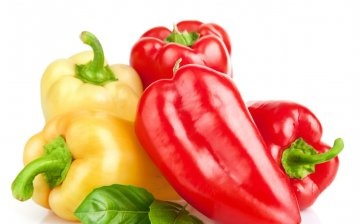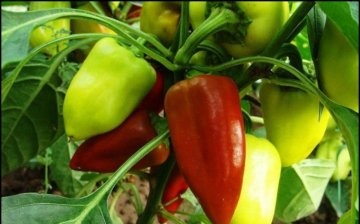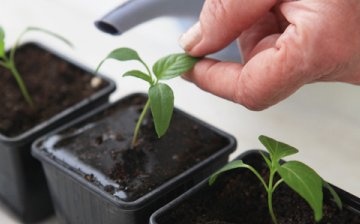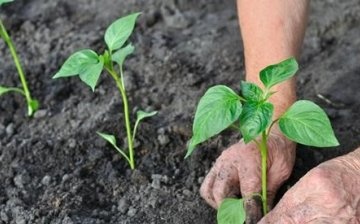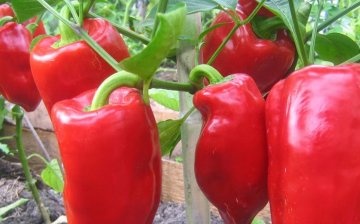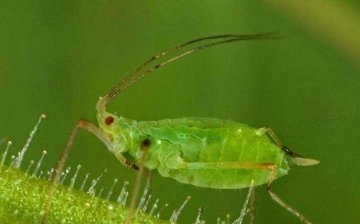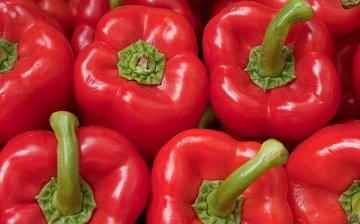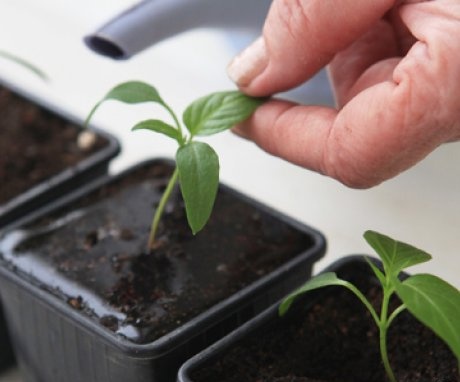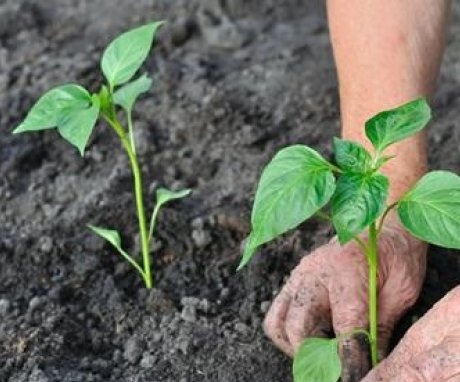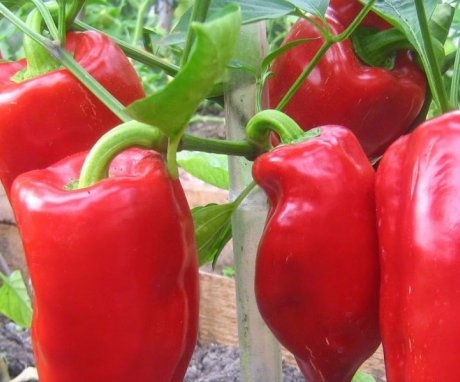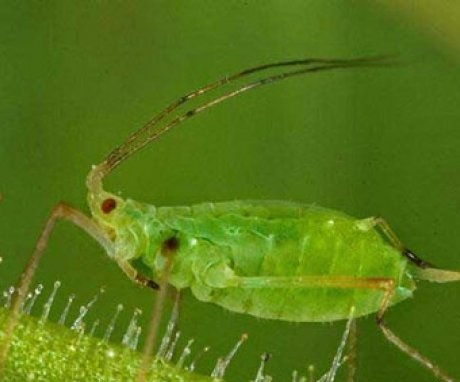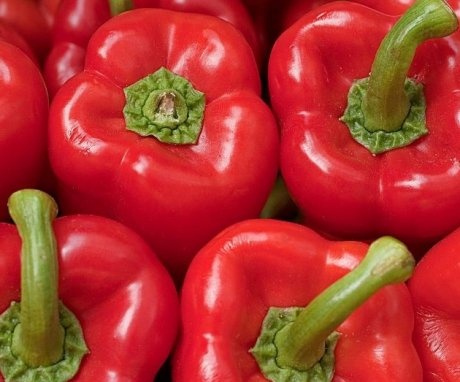Pepper "Gift of Moldova": description of the variety and cultivation technology
More recently, growing sweet pepper was considered a kind of luxury. It was very problematic to buy seeds of a juicy and tasty vegetable. But today the situation is completely different. Breeders have created a huge number of hybrids and varieties that can be grown not only in the south, but also in the northern regions.
Now every gardener can plant whatever his heart desires. Despite the rich assortment of seed material, the very first varieties, imported into the Soviet Union, remain the favorites of summer residents to this day. These seeds have worked well, the plants give a generous harvest and delight with the taste of the fruit. These "pioneers" include the "Gift of Moldova". Let's talk about this variety, consider the agricultural technology of its cultivation, care rules and much more.
Content:
- Description of the variety Gift of Moldova
- Growing seedlings
- Transplanting seedlings into the ground
- Pepper care
- Diseases and pests
- Harvesting and storing vegetables
Description of the variety Gift of Moldova
In the 80s, several varieties of sweet pepper were brought to Russia, which in common people received a common name - bell pepperdespite the fact that they had nothing to do with Bulgaria. One of these varieties was "Gift of Moldova". It was created at the Research Institute of Moldova in 1973. The variety instantly gained popularity.
Pepper has a good yield and excellent taste.
Belongs to mid-season varieties, ripening period - from 115 days to 130. This is a small plant, reaching a maximum height of 50 cm, half-stem. The fruits are large, juicy and sweet. Wall thickness - no more than 5 mm. Suitable for fresh consumption and preservation. With proper care and adherence to planting techniques, up to 5 kg of crop can be harvested from 1 m2. The plant is unpretentious and tolerates weather surprises well. Resistant to diseases such as fusarium wilting. "Gift of Moldova" can be grown both in greenhouses and in the open field.
Gardeners appreciated all the advantages of the variety and do not want to replace it with new, modern hybrids. Pepper does not require any special skills from the gardener and is easy to care for. However, with all the simplicity of growing a crop, you still need to follow the basic rules of planting agricultural technology. Otherwise, even such an unpretentious variety will give little yield, or it will wither at the stage of development.
Growing seedlings
Before tackling seedlings, you should decide in advance where the sweet pepper will be grown - in a greenhouse or open field. The timing of planting seeds will depend on this. So, for greenhouses, seeds are sown in February, for open ground at the end of March. The seedling growth period is approximately 1.5 months. Keep this in mind when planning to plant your seeds.
For seedlings, you need to prepare the soil:
- It should be loose, lightweight and highly fertile.
- If the soil is heavy, clayey, it is diluted with sand and humus.
- It is recommended to add to any soil organic and mineral fertilizers.
- The soil must be air and moisture permeable.
It is advisable to plant seeds in separate pots or cups, since pepper seedlings do not tolerate well pick... The indoor air temperature is about 22 ° -25 °. If the seeds are planted in boxes, after the formation of 2-3 true leaves, the seedlings dive. Seedlings are transplanted into separate cups. Do not forget that pepper does not tolerate any transplant. Therefore, it is better to sow it immediately in peat pots or tablets.
Seedling care consists in timely watering.
Make sure that the seedlings receive enough diffused sunlight. When 8-9 true leaves have already appeared on the plant, start hardening it. Move seedlings to fresh air. First for an hour, then more. The pepper must adapt to the sun's rays so that the tender leaves do not get burned in the greenhouse or in the open field. The plant is ready for transplanting as soon as it reaches a height of about 20 cm - this is 7-9 leaves on the stem.
Transplanting seedlings into the ground
If the seedlings were grown for a greenhouse, they are transplanted into the ground in early March. They are planted on the ridge in early June, when the soil has already warmed up enough and there is no threat of recurrent frosts. The ground temperature should be between 15 ° and 20 °. The land must be prepared. Initially, it is dug up and humus is added. In heavy soil - sand and humus. The best precursors for planting peppers are cabbage, legumes and pumpkin crops. It is undesirable to plant pepper in the place of a tomato.
The distance between seedlings should be approximately 40 cm, between rows 60 cm.
Since the "Gift of Moldova" plant is small and compact, you can plant pepper and at a smaller distance from each other. In this case, the greenhouse should be well aerated. The seedlings are buried in the ground at the level of the first leaves. Repot the plant carefully without damaging root system... Before planting, spill a lot of soil both in the pot, if it is not peaty, and in the soil. Only then carefully remove the plant.
If the pepper is planted in open ground, it is better to prepare a high ridge for it. So the soil will always keep warm enough for the growth of the root system. This is especially important for the regions of the middle zone and Siberia.
Pepper care
Pepper care comes down to watering, weeding and feeding:
- The plant loves moisture very much. The higher it is, the juicier the fruits will be. For this reason, many gardeners prefer to grow peppers in greenhouses, where it is warm and humid. Water the plant as the topsoil dries out. It is important not to plant next to peppers. tomato and other cultures. He must grow alone, without neighborhood. Remember to ventilate the greenhouse periodically.
- During the growing season, the plant is fed 2-3 times, no more. It is very important not to overdo it with fertilizers, otherwise the plant will begin to fatten, and not bear fruit. The first feeding is applied during the budding period. The best fertilizer for pepper is slurry diluted with water in a ratio of 1:10. Be sure to moisten the soil before fertilizing to avoid scalding the root system.
- During the growth period, it is important to monitor the development of the shoots. They are pinched if they exceed the length of the main stem. Since the "Gift of Moldova" plant is small, its shoots usually do not make the gardener constantly monitor them. They are small and do not thicken the planting. This feature is attributed to another advantage of the variety. The plant grows into a neat and compact bush.
Some gardeners are confident that if you pick the leaves from the pepper bush, the harvest will be greater. But agronomists advise against doing this. The only thing that is necessary is to remove the fruits on time. They are carefully cut, and not turned out together with the stalk. Ripe fruits of the variety have a light green color. Biological ripeness occurs with reddening of the fruit.
Diseases and pests
Subject to agricultural techniques and rules of care, diseases and pests appear quite rarely. However, no one is safe from bad weather conditions, constant rains and temperature changes.Under such conditions, ailments and parasites appear.
The most common diseases of pepper are:
- Fusarium
- Rot (gray, white and black)
- Spots (black, brown, bronze)
These diseases appear with strong temperature changes and high humidity. Used for treatment fungicides, the affected parts of the plant are removed. Often, diseases affect the plant so badly that it is more expedient to remove it. In order to avoid this, or at least reduce the risk of developing diseases, it is necessary to follow the rules of planting and caring for pepper... Do not thicken the planting, weed the vegetable beds in time and do not overmoisten the soil.
Before planting, seeds can be dipped for an hour in a weak solution of potassium permanganate for disinfection.
Pests can appear aphids, spider mites and slugs. Parasites are fought with insecticides. But if pests appear during the ripening of fruits, it is better not to use chemicals. Treat the plant with a solution garlic with nettles. The procedure is carried out at least twice with a break a week.
With proper care and proper planting, the plant is unlikely to get sick. However, the gardener should be careful and observe the development of the pepper.
Harvesting and storing vegetables
Harvesting begins from the moment of technical maturity - the fruits take on the desired shape and color. If possible, you can wait for biological maturity - the fruits turn bright red. The fruit is cut with the stem. During the season, the crop is usually harvested 5-6 times.
Pepper can be stored in different ways:
- Most often, the vegetable is wrapped in a film and passed through a vacuum machine. Store at a temperature not exceeding 10 ° for a month.
- You can store peppers in the refrigerator, but not for long - no more than a week.
- Gardeners often pack the fruits in newspaper or any paper, store in a dark room at a temperature not exceeding 8 °.
Pepper "Gift of Moldova" is perfect for preservation. Perhaps this is the best way to store a vegetable. Winter salads, lecho or seasonings are made from it. Any kind of pepper will not be stored for more than 1.5 months. Therefore, the vegetable is grown, as a rule, for the preparation of fresh salads, pickles or pickles.
It is not difficult to grow the "Gift of Moldova" variety. Follow the basic rules of care and planting techniques. In this case, it will be possible to grow a generous harvest, the fruits will be juicy and tasty!
More information can be found in the video:



